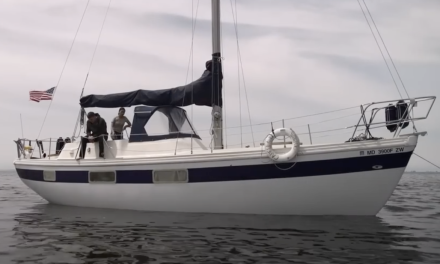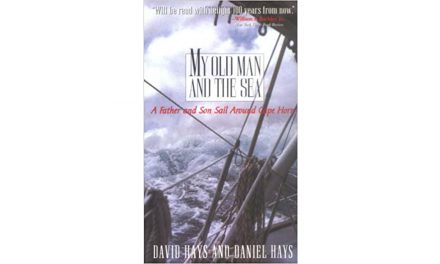
How much time will you sacrifice by sailing at a more comfortable angle to the wind? Why does that gust of wind “come from the side” when you thought you were close-hauled? Would you like to know more about the principles of sail shape without getting too technical? Wind and Tide in Yacht Racing, a vintage racing text claiming to be the first scientific explanation of apparent wind and wind shifts, can help you understand and visualize these factors.
Parallelograms illustrate the differences in angle and velocity of true and apparent wind. Plotting tools help you determine true distance from an upwind destination and analyze trade-offs between increased speed and increased distance for different sailing angles. A photograph of a square-rigged tall ship with topsails trimmed further aft illustrates apparent vs. true wind better than any text or parallelogram. Wind and Tide’s detailed discussion of apparent wind and sailing angles is not found in today’s general sailing manuals.
This book’s discussion of currents, a topic covered thoroughly in today’s coastal navigation texts, still contains some unique gems. For example, an adverse current can actually improve your ability to point upwind, as long as you can sail faster than the current. And the “lee-bow” method of using a current to push you to windward could occupy the tinkering pilot for many afternoons.
The book has some shortcomings as a manual. The “8 Ball” plotting chart and some formulas will test the patience of those rusty on algebra and geometry. In addition, principles are occasionally given as truisms without adequate explanation (for example, “naturally, if we increase the apparent wind velocity . . . we will increase the boat speed.”)
Finally, this book offers the reader incidental views into the quaint world of pre-war East Coast yachting. Though the text is intended as a universal scientific discussion, the reader is assumed to be sailing on Long Island Sound (“the foremost yachting waters in America”). In determining compass variation, the reader is encouraged to eschew the azimuth ring and instead use a wad of gum, a toothpick, a fine chronometer, and the time signal from WOR in New Jersey.
Wind and Tide’s simple block diagrams and clear explanations simplify the fundamentals, whereas a new racing text, with an emphasis on gear, instruments, and precision, might intimidate (or bore?) the non-racer. With just the concepts, you will appreciate our sport more, you may squeeze a little more performance from your old boat and baggy sails, and you may avoid homeward slogs to windward. Used copies are available for between $10 and $20.
Wind and Tide in Yacht Racing by HArold Augustin Calahan and John B. Trevor (Harcourt Brace and Company, 1936; 145 pages)




